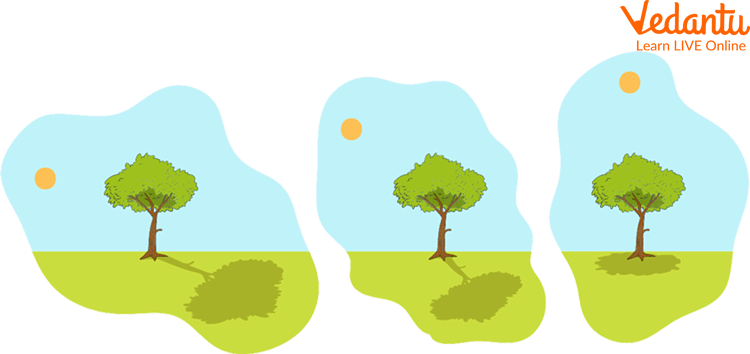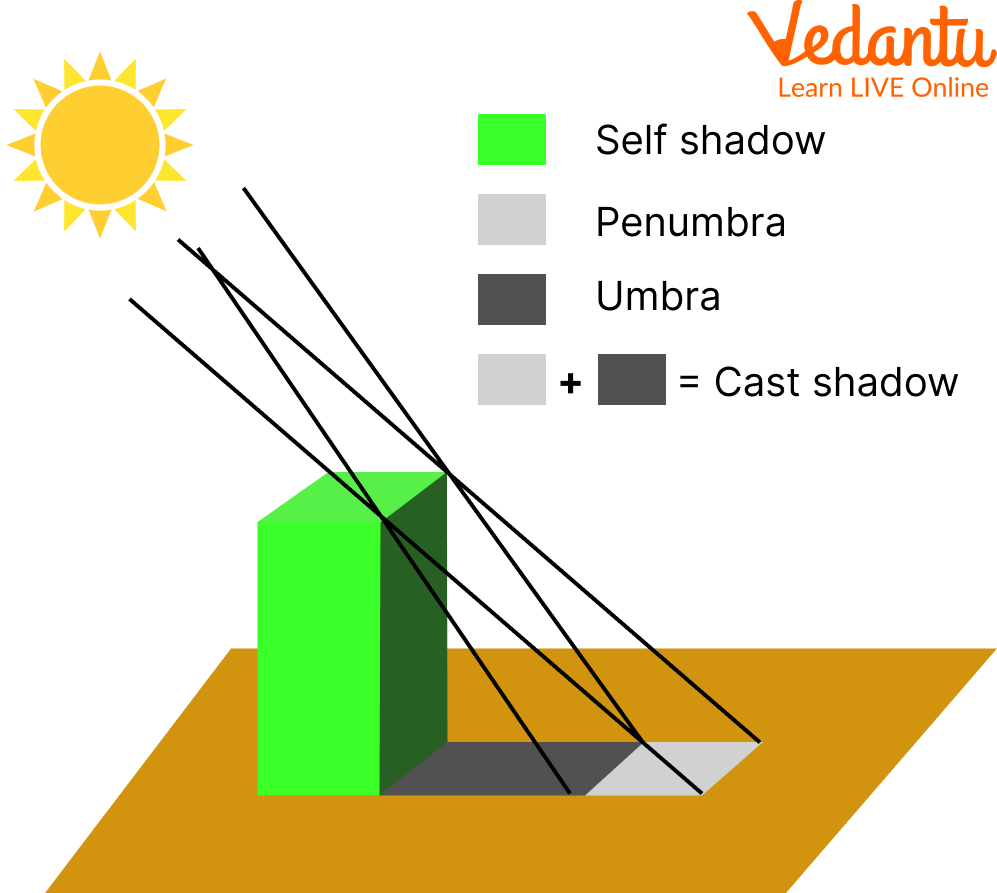




Introduction to Shadows
The shadows are formed by the blockage of light by an opaque object( objects through which light does not pass). The light rays emitted from a source cannot pass through the solid surface making a shadow on the ground. The shadow's shape and size are dependent on the position of the light from the solid object. The shadow formed is very much darker than its surroundings. The shape and size of the shadow of the same object might vary. The formed shadow of an object can often be misleading. For example, an ice cream cone can form a triangle.
What is a Shadow?
Whenever we go out to play during the school recess we can always see a dark patch on the ground. That dark patch in the shape of our body is the shadow. The dark patch formed by the blockage of light by a hard surface put against a light source is known as a shadow. The blockage of light or darkness of light gives shade light and shadow formed against the light source.

Shadow
Light and Shadow
Light is the key component in the formation of shadows.
The light position, its intensity and distance from an object decide the kind of shadow that will be formed.
The light is placed very close to the object the shadow formed is very large.
Whereas, if the light is at a greater distance from the object the shadow formed is very small.
Shadow will always be formed behind the object.
Shadows are seen forming because of the sun and the light emitted from it.
The position of the sun changes throughout the day and thus the shadow length and size also change for everything on this planet.
Like early in the morning the shadows will be longer and a bit lighter in shade.
During the middle of the day when the sun is at the centre of the sky, the shadow is very small and also very dark.
And again post 2 p.m. in the afternoon the shadows begin to grow long and less dark.

Shadow of Tree
How is the Shadow Formed?
A shadow is formed by the combination of an opaque object, a source of light and a screen.
The light source emits light that falls upon a solid object, thereby casting a shadow which is basically darkness formed by the absence of light.
That shadow falls upon a surface right behind the object.

Formation of Shadow
Nature Shadow Drawing
There are always shadow patterns formed on the ground by the trees and buildings.
We need to choose an ideal spot where the shadows are very dark and distinct.
Once we find an ideal spot we can use a blank sheet of paper and place it on the ground and adjust its position to find the right image. This is called composition.
Now, we need to work fast as the scene might change as soon as the sun moves.
So we quickly trace the outline of the scene formed on the sheet of paper.
The shadow portion is said to be the positive space in the image and the rest portions are the negative space.
Now we can either shade it to our liking or use colours as well.

Nature Shadow Drawing
Some Interesting Facts
The only celestial bodies that are able to cast properly visible shadows on Earth are the Sun, Moon and at times Venus or Jupiter.
Shadows cannot be formed by any transparent object, such as glass as the light rays pass through them.
Shadow is the basic principle behind the first clock made by humans and is known as a sundial.
Summary
Shadows are dependent on light. They follow the same rules as the rules of light reflection. Shadows have been used by humans for a long time to determine a lot of things. What is shade light and shadow are discussed in the article. A very common usage of shadow is to determine time using the sundial. The intensity of light determines the darkness of the shadow which is also dependent on what time of the day it is and where is the sun positioned.
FAQs on Shadows
1. How does one draw using shadows?
Following are the steps to draw using shadows
There are always shadow patterns formed on the ground by the trees and buildings.
We need to choose an ideal spot where the shadows are very dark and distinct.
Once we find an ideal spot we can use a blank sheet of paper and place it on the ground and adjust its position to find the right image.
So we quickly trace the outline of the scene formed on the sheet of paper.
2. How is a shadow formed?
A shadow is formed by the combination of an opaque object, a source of light and a screen. The light source emits light that falls upon a solid object, thereby casting a shadow which is basically darkness formed by the absence of light.
That shadow falls upon a surface right behind the object. The shadow's shape and size are dependent on the intensity and position of the light from the solid object.
The shadow formed is very much darker than its surroundings.
3. Can shadows be scary?
Often different objects placed in a certain manner can form weird and scary shadows. We often see empty tree branches forming long sharp shadows like fingers which seem to come for us as the branch sways because of the winds. Shadows can become very large and monstrous if the light and the object is placed in a specific distance from each other and that can result in very scary shadows. Therefore, yes shadows can often be very scary.









